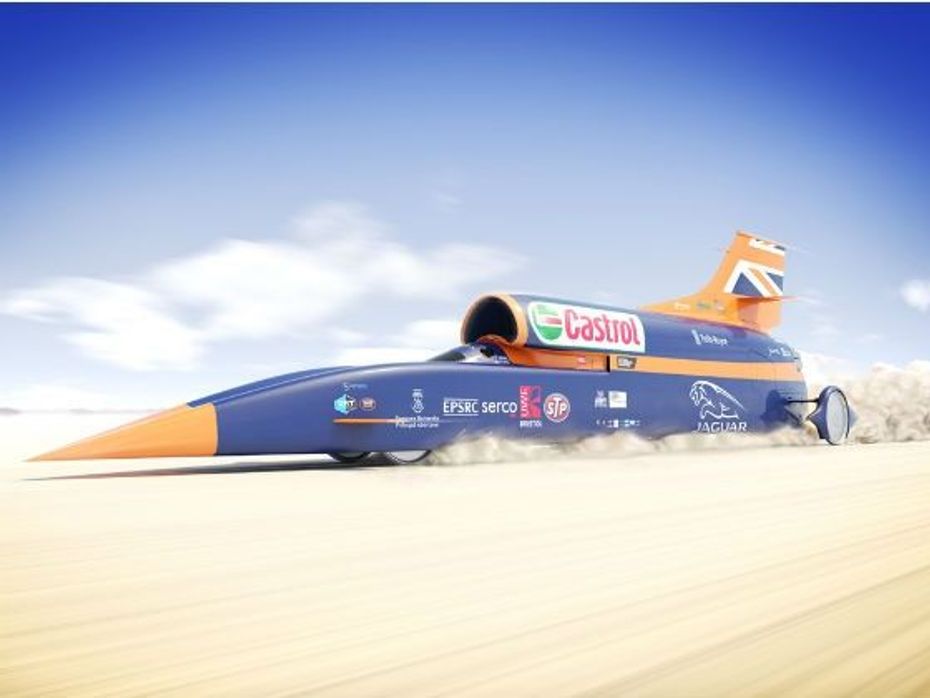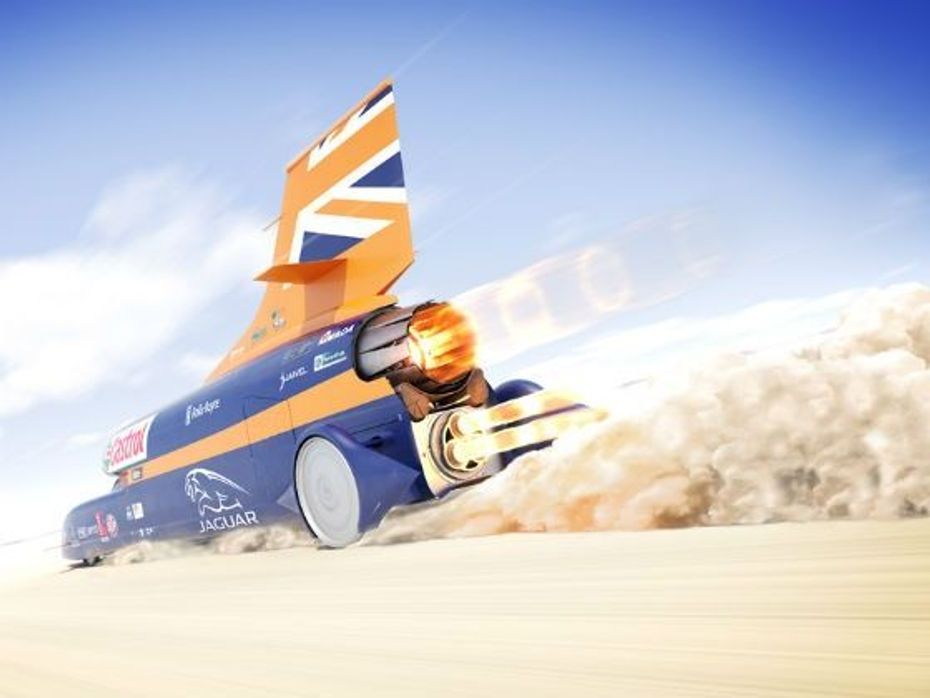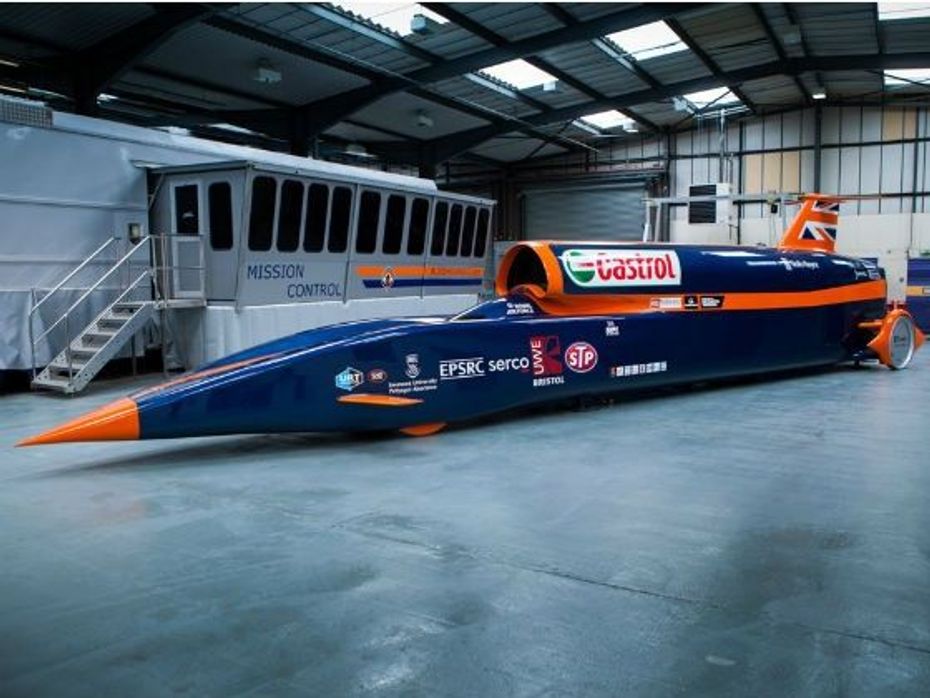
Are Maruti Suzuki’s Strong Hybrid Powertrains The Best Engine...
- Apr 25, 2024
- Views : 24467


Andy Green is a rockstar like none other. Some days he rides a Harley, enjoys skydiving frequently and is also a Wing Commander in the Royal Air Force, but we’d say these are the easy days. He is also a Land Speed Record holder, an unbroken record that he has held for 17 years when he clocked 1227.93kmph in the Thrust Supersonic Car (SSC) at the Black Rock Desert in the USA in 1997. He’s at it again though with the Bloodhound SSC this time, and Andy is going to attempt driving it at 1000mph (1610kmph) next year. We get our five minutes with Andy where we rush through the questions and he answers them with all the time in the world. Read on…
ZigWheels: My very obvious and awestruck first question is what it feels like to drive that fast?
Andy Green: It feels like the taste of chocolate. If you’ve never had chocolate, I’m really going to struggle to explain what it feels like. I use a lot of my background as a jet fighter pilot sitting in the cockpit of the car. It is a relatively cramped environment. It is comfortable though as the cockpit is built around me but there isn’t enough room to spare. It is hot in there and very noisy. I have a jet engine behind my head – it’s the world best, a Euro Fighter engine, but it is noisy. The good news is, when the car is supersonic, I am going faster than the speed of sound so I cannot hear the engine. The bad news is that the shock waves going over the cockpit going to the engine intake will be even noisier. Since the cockpit is all carbon fibre, it is a very loud echoing box.

ZW: Noise can be controlled by damping, but how do you deal with G-forces?
AG: Yes there will be a lot of G-Forces. The car will be accelerating at 2G. That’s 65kmph every second and it slows down at 3G, about 100kmph every second. So you can imagine if you’d want to stop a road car from 100kmph in one second, you will have to crash into something. That’s the sort of violence of the Bloodhound. When I throttle back at 1,600kmph, the drag of the car will create a 3G deceleration.
ZW: So how do you cope with such violent deceleration?
AG: I am strapped into pretty much a standard racing harness. It is a six-point harness, although at one point we were looking at an eight point harness. I am sitting in a structural carbon fibre seat moulded to my specifications plus the HANS device like they use in Formula One for neck support. But that level of G is fighter pilot territory and it’s something I practice in an aerobatic airplane regularly. Flying an airplane keeps my flying skills up to date and is also a very good way of refreshing my G-tolerance.

ZW: What does it take to keep the car in a straight line at much over Mach 1 speeds?
AG: We don’t know as nobody has ever done it. In 1997, the Thrust SSC was a very difficult car to keep straight. At the time, computer modeling did not exist to understand why the car wasn’t going to be very stable. It had static stability so it would not turn around but dynamically it was all over the place and I had to fight it to keep it straight. Ten years later, the technology was available to understand the mistakes we did in the design so the Bloodhound should be a lot more stable. But we are going much faster on a harder surface so we will have limited grip. In a matter of 30 seconds, conditions will change drastically as speeds rise and I will go from making huge turning inputs to try to keep the car straight to tiny corrections at very high speed. I’ve got to say that it hasn’t ever been done before, so ask me again in two years time.
ZW: More than anything, the Bloodhound SSC is a study project…
AG: It’s not just a research programme where you do all your research and when you are done, you can design your car. So your first prototype and your R&D vehicle is also your final prototype and your racecar. The decisions we made five years ago in terms of powerplant and layout are the decisions that we now have built and will run. The point is, it isn’t the perfect car but it is good enough to do the job which is the current limit of technology.

ZW: Coming to the Bloodhound’s educational aspect. How does it benefit engineering globally?
AG: For all the problems we’ve got for tomorrow for that high technology, low carbon world that we’ll all be living in one day, there are technical solutions to all those problems. What you need are people who can find these technical solutions for you. There aren’t enough engineers in the world. Bloodhound has the opportunity to make science lessons fun. Kids are just fascinated by the technology and getting them to take up science and engineering is the long term legacy of Bloodhound. It’s not like Formula One or Military technology where you have to keep your advantage a secret. We can share all the technology as nobody else will build a Bloodhound. It will be online as we do it and that’s the big difference. We are already seeing it make a big difference in the UK and because it is online, it is an opportunity for countries all over the world to get involved in. For India, Tata’s steel is in the car. Jaguar is doing a lot of work and Jaguar is a Tata run company. We’ve also got our first exchange student from South Africa who is of Indian origin. So getting this into Indian schools and a chance to study at UK universities is a fantastic prospect for India.
For details about the Bloodhound SSC, visit www.bloodhoundssc.com

Are Maruti Suzuki’s Strong Hybrid Powertrains The Best Engine...

Mahindra XUV 3XO (XUV300 Facelift) Launched With Significant Design...

3 New Major Design Details Mahindra XUV 3XO Will Pack Over...

Tata Curvv: A Much Clearer Look At Its Interior Ahead Of Its Unveiling

2024 Mahindra XUV 3XO Interior Revealed: Old vs New Compared

Overview In 10 Images: Mahindra XUV 3XO Mid-Spec MX3 Variant

10 New Features Expected In The Upcoming 2024 Mahindra XUV 3XO...

Mahindra XUV 3XO: All Details You Need To Know In 10 Images

5 Features Upcoming 2024 Maruti Suzuki Dzire Is Expected To Get Over...
India's largest automotive community